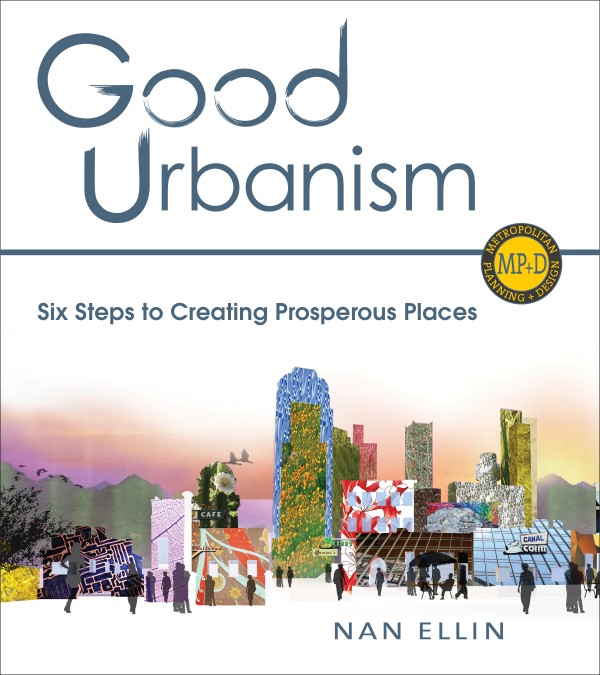
Author: Nan Ellin (Island Press, 2013)
In cities around the world, a consensus is developing among urban planners, placemakers and communities about the essential components of healthy, prosperous urbanism. So why aren’t these ideals being put into practice? We evidently have the knowledge, the tools, and the will to make good places. Yet the actual realization of good urban places remains elusive.
In Good Urbanism: Six Steps to Creating Prosperous Places, Dr. Nan Ellin argues that part of the problem is that we are still largely depending on a traditional planning paradigm. Throughout the nine chapters in this richly illustrated book, Ellin identifies the barriers to good urbanism inherent in conventional approaches and outlines a practical roadmap to overcome them.
Nan Ellin is Chair of the Department of City & Metropolitan Planning at the University of Utah where she is also Professor of Urbanism. Ellin’s work in urban design, placemaking, community-building, and university-neighborhood partnerships aims to enhance quality of life, specifically through improving the built and natural environments. She is also the author of Postmodern Urbanism, and Integral Urbanism; co-author of Phoenix: 21st Century City; and editor of Architecture of Fear.
Readers of Ellin’s previous books will recall the catchy and compelling style of her writing, a technique that she further hones here with her alliterative six steps process to overcome the obstacles to good urbanism.
Those steps include:
- Prospect;
- Polish;
- Propose;
- Prototype;
- Promote; and
- Present.
In outlining these six creative yet concrete steps, Ellin ably bridges the divide between theoretical vision and practical reality that has seen many great ideas for our communities fall short in the past. Together, the steps illustrate how urban planners and decision makers can work with communities to assess a place’s strengths, decide what ideas to implement, determine the best method to steward the project forward, rally resources to support it, and offer opportunities for refinement.
But it is easy to offer a roadmap to a better future; the urban planning literature is littered with them. What sets Good Urbanism apart is ten case-studies—ranging from New York City’s High Line Park to Phoenix’s Canalscape (which I had the privilege of being a part of)—that illustrate how these steps have been applied in real world situations.
Experienced urban planners and practitioners and novice urbanists alike will find several new instruments in Good Urbansim to add to their toolkits. These will help enhance the health and well-being of our places and move beyond sustainability to a path towards prosperity.
To learn more about Good Urbanism from Dr. Ellin herself, I encourage you to watch this video of her speaking as part of the 10 11 12 Lecture series held at The Leonardo in Salt Lake City:
***
Yuri Artibise is a public policy analyst and social media specialist. Through his Yurbanism brand, he explores the ‘Y’ of urbanism by sharing ways to make our cities more livable, community-oriented places one block at a time. He currently works with PlaceSpeak, an online location-based community consultation platform.


